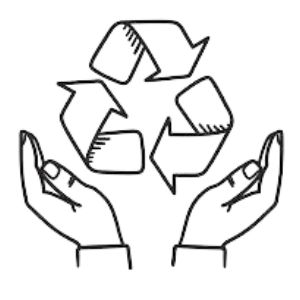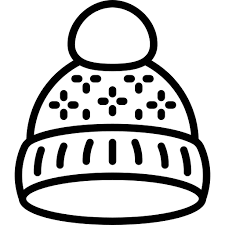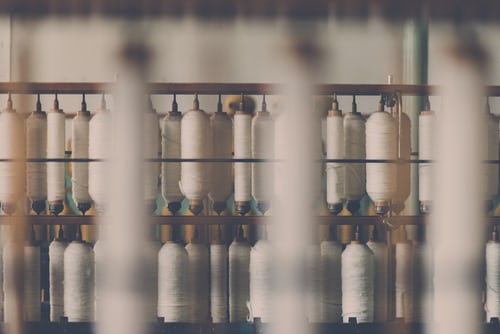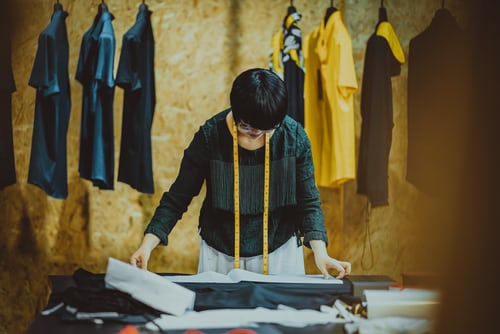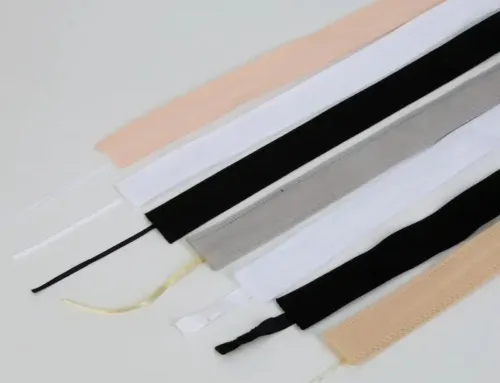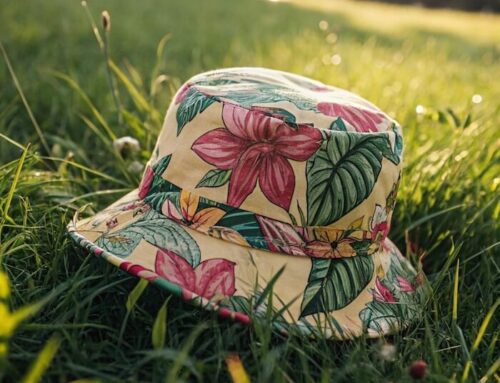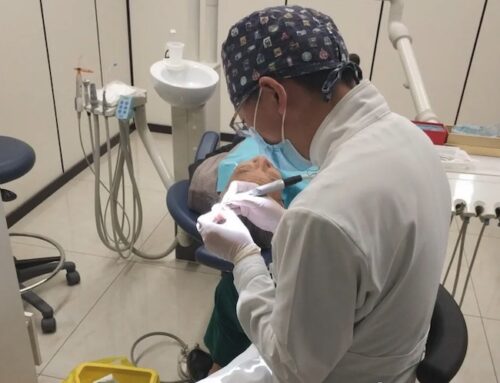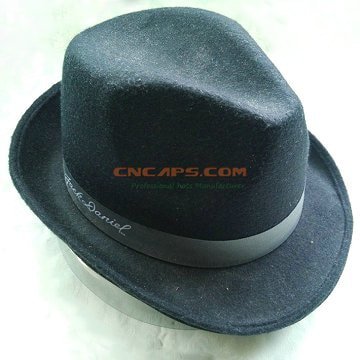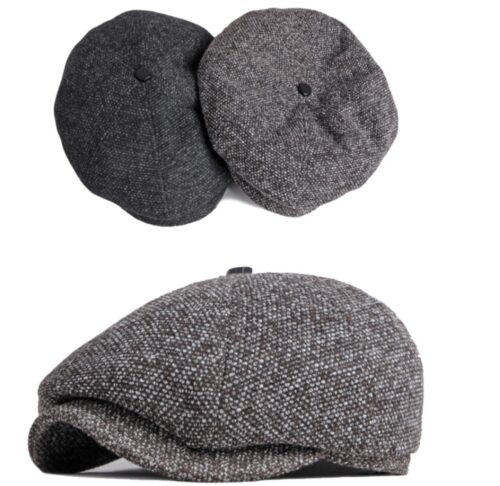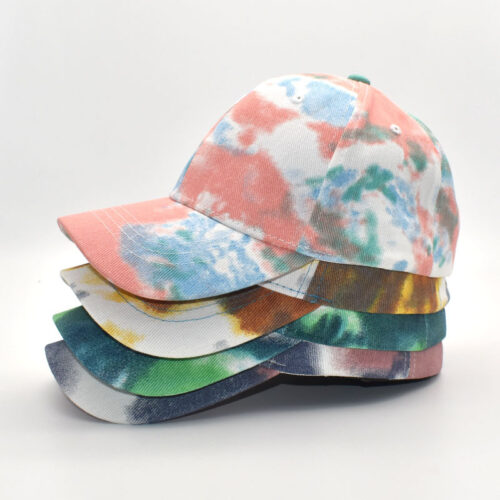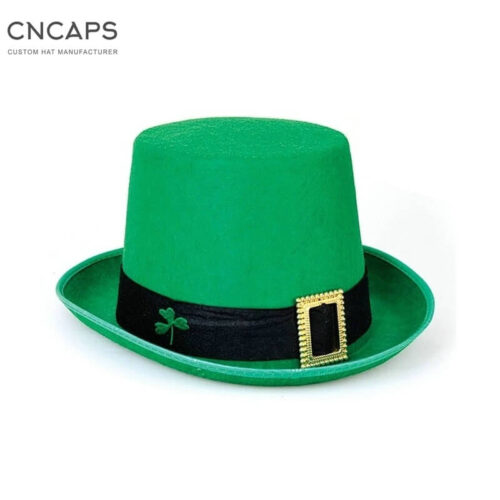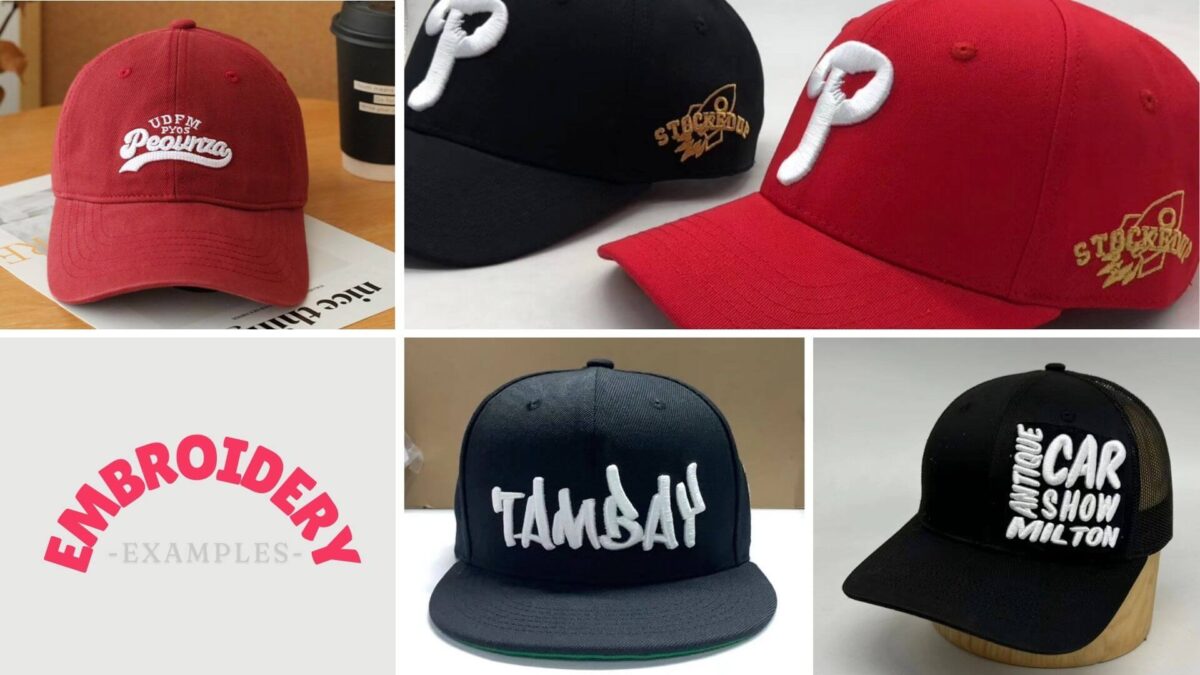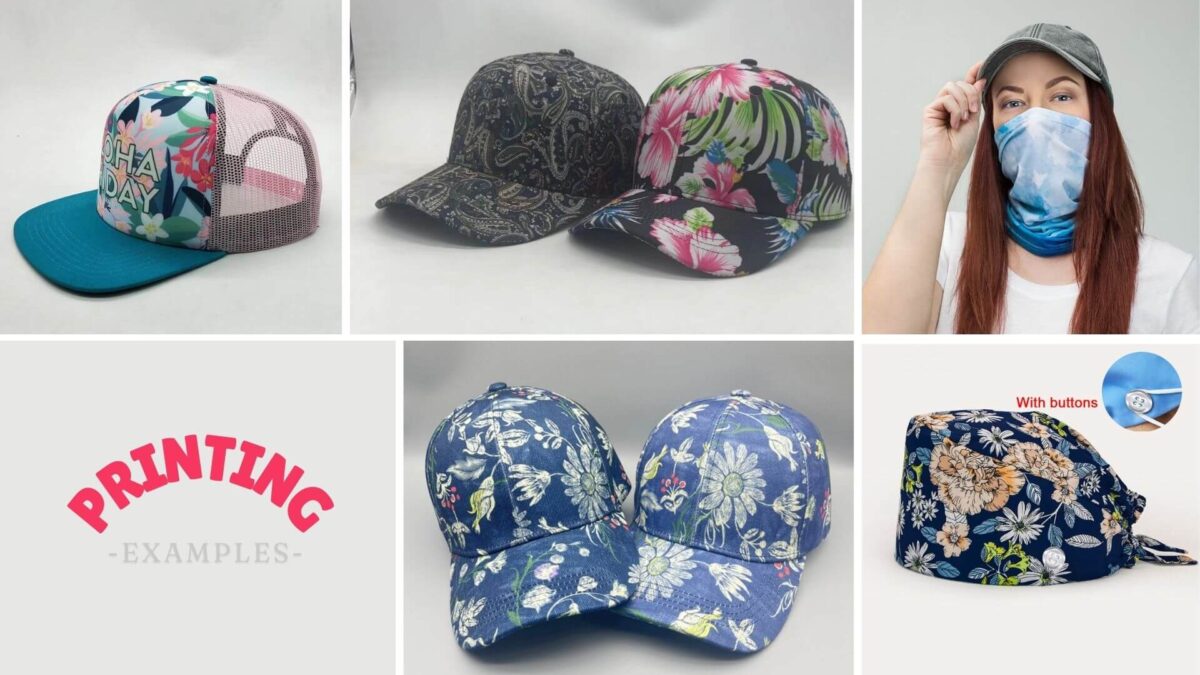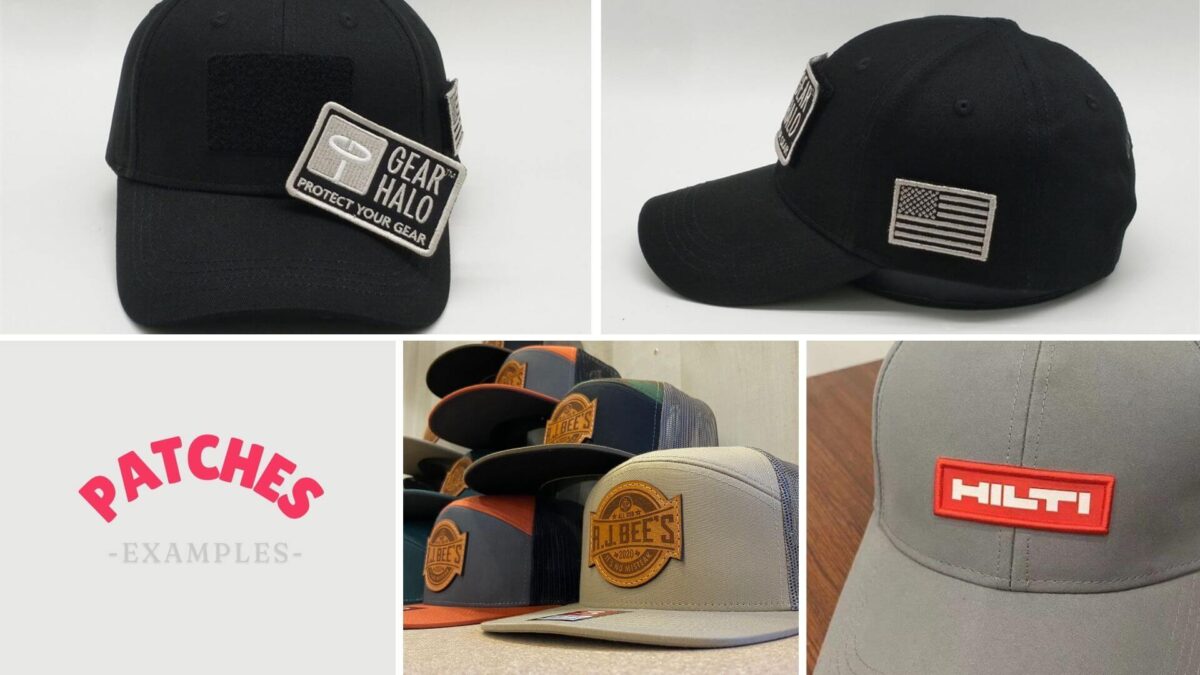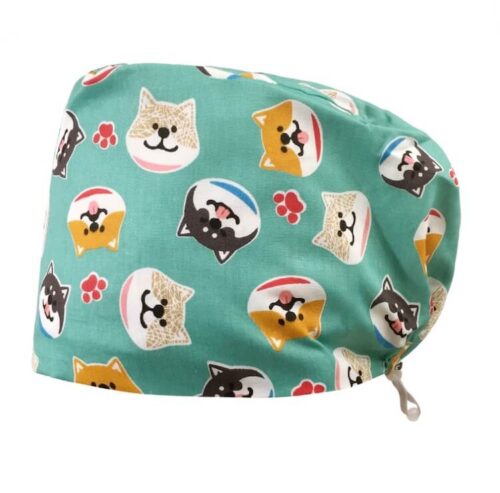Why Going Green: Top Eco Friendly Textiles Material and Production for Clothes, Accessories
Table of contents
1.What is Going Green Eco Friendly Textiles Material?
Go Green is a famous slogan and a common name of environmental movements around the globe. It unites people who care about nature, want to produce less waste and reduce our ecological footprint on the planet. The main idea of Go Green is in use of eco friendly products, following a sustainable way of living, and, of course, in the Zero Waste concept.
Eco friendly has become a buzzword in advertisements, social media and on TV. Customers love the products with green leaves printed on, minimalistic designs and soft colors that make them think that no chemicals were used in production. However, the first and foremost is to be genuinely environmentally friendly, not just make the product look like it is organic.
Eco friendly business is the one where the decisions are made with the awareness of the consequences to nature. Use of this word makes most people believe that the product is not harmful to the environment and can be recycled. Make sure that you are telling the truth when putting this word on the packaging of your product – do not disappoint your customers and meet their expectations.
Sustainability is one of the most challenging lifestyle concepts to follow. Making your business greener is good, but making it sustainable is a much greater goal which is harder to accomplish. The product can be called sustainable only when it is made from renewable environmentally friendly resources, but besides that, the manufacturing process should also result in some environmental benefits, require minimum energy and cause no pollution.
Zero waste concept focuses on prolonging the life cycle of the purchased item. It’s a significant part of 5R formula: Refuse, Reduce, Recycle, Reuse, and finally, Recompost. Zero Waste activists strive to reduce the number of landfills and incinerators and communicate the idea of multifunctional usage of the products. They do not believe that recycling is an all-pervasive solution. Zero Waste is also about learning to say no to impulse and unplanned purchases and refusing single-use items, plastic packaging, and if possible, packaging at all.
2.Why Eco Friendly Textiles Material Becoming More and More Popular?
Green textile refers to the use and production of the sound on the environment and human health, according to environmental protection and ecological indicators of demand for textiles. The development of green products including green design and green production, is considering two product structure and function, making products from the choice of materials and production, the use of recycling the whole process was compliant with certain environmental requirements.
The American Scholar Vogt wrote in his book was based on class and undermine its essential to the survival of the environment and the only living organisms. Productivity growth in the use of intelligence to humans as well as to the strength of the ecological and environmental destruction. With the progress of the times, there has been a gradual realisation that the protection of the environment of the importance of human existence.
In recent years, a worldwide “return to nature,” “green consumption,” “green” products in a wave of international textile industry. The people in the production of textiles, dressing and using the security heightened demands. Countries such as the United States and the European Union has introduced a series of related laws and regulations and standards, the so-called “green labels.” Green contributed enormously to textile research and development. Green textile development is inevitable.
3. Top Eco Friendly Textiles Material and Production
-
Going Green raw materials
Extracts based on natural matter
Banana fiber
Banana fiber is a leaf fiber obtained after harvesting fruit. The new experimental study is the weaving of banana fiber cloth. From the point of view of developing a new banana fiber fabric, the paper is made from banana fiber, cotton and artificial fiber is made of yarn for different use of the fabric needed to take, and then dyed with active or direct dye. This banana fiber garment with lining is very suitable for making a top, fiber dyeing is also very uniform. Multi-colored clothing looks beautiful and has great appeal.
Sorona
DuPont in october 2000 launched a new polypolymer compound, Solona, made from corn. Its fiber products in comfort, wear resistance, elasticity, anti-wrinkle, protection and other properties, greatly better than the existing chemical fiber products. Good dyeing performance, colorful varieties, made of artificial leather is softer, more like leather, its most unique advantage is recyclable, making it an important environmental protection products.
Polylactic Acid (PLA) Fiber
Polylactic acid fiber is the use of renewable corn, wheat and other starch raw materials fermented into lactic acid, by polymerspinning and made. Polylactic acid fibers are superior to other biodegradable fiber materials in terms of breathability, strength, elasticity and heat resistance. Fabrics made of polylactic acid fibers have a comfortable skin touch and feel, as well as a silky sheen. Polylactic acid fiber products are discarded and decomposed into carbon dioxide and water in soil or water. They then become the starting ingredient for starch in solar photosynthesis.
Chitin Fiber
Chitin is an animal cellulose that exists in the shell of shrimp, crabs, insects and other crustaceans and in the cell membranes of mushrooms, fungi, bacteria, etc. The development of chitin reduces environmental pollution because it is biodegradable and does not cause damage to the environment. Chitin fiber is alkaline and highly chemically active, with good adsorption, adhesion, sterilization and breathability and other excellent properties. Textiles made of crustacean fiber have the ability to prevent skin diseases, antibacterial, anti-odor, sweat-absorbing moisturizing, and are comfortable to wear.
Lyocell fiber
Lyocell fiber raw materials from the natural renewable fast-growing forest, will not cause predatory exploitation of resources, waste can be degraded in nature, will not cause waste pollution to the environment. It has both the physical and chemical properties of natural cellulose and its excellent take-it properties, as well as some synthetic fiber properties. The production process is non-polluting and recyclable, and is known as the green fiber of the 21st century.
Modal Fiber
Modal fibers are made from natural wood and can be naturally degraded when used. Modal fiber fineness is only ldtex, smooth, smooth, silky, has the strength and toughness of synthetic fibers, moisture absorption capacity is 50% higher than cotton, dyeing performance is better, good color absorption, color fastness is good, has better form and dimensional stability than cotton, fabric color bright, bright, and natural wrinkle resistance.
Soy Protein Fiber
Soybean protein fiber has not only the excellent properties of natural silk, but also the mechanical properties of synthetic fibers. Its appearance not only meets people’s pursuit of wearing comfort, but also conforms to the fashion of clothing without iron, washable and wearable. Soybean protein fiber raw materials from the natural world soybean meal, large and renewable, will not cause predatory exploitation of resources. In addition, in the production of soybean protein fiber does not cause environmental pollution. Since the auxiliary materials and additives used are non-toxic, and most of the additives and semi-finished fibers can be recycled and reused, and the residue left behind by purified protein can also be used as feed, so the production process is fully in line with environmental requirements.
Unstained wool
The color of wool fabric, such as white, brown, gray, etc., is not otherdy, but the original color of the sheep, such wool is called unstained wool.
Cannabis Fiber
Like organic cotton growth, cannabis thrives and gets a good harvest without the use of pesticides and other chemicals during the cultivation and growth process, and is a textile fiber that is beneficial to the ecological environment.
Recycled polyester fiber – rPET
It is made from recycled poly-benzodiazepine soda bottles. In fact, it is made of discarded plastic bottles (such as soft drink bottles, etc.) as raw materials, it achieves the recycling of material utilization, not only conducive to the ecological environment and save resources, recycled polyester fiber yarn, can be made into flat-print fabrics and a variety of novel fabrics, such as luggage cloth, swimsuits, water-soluble jackets and so on.
Milk Fiber
The use of high-tech fiber extracted from milk, the skin has a bactericidal care effect.
Reprocessed raw materials for the original fibers
Colored Cotton
Colored cotton is a new type of cotton, from planting to processing process, no need for artificial dyeing, no pollution source. Natural color cotton color, quaint and elegant, soft texture, flexible, comfortable to wear, full color, will not fade. The fabric woven with it not only has a natural nature, but also feel, elasticity, softness are good, and truly realize the whole process from fiber growth to textile clothing “zero pollution.”
Spider silk protein fiber
Spider silk is a special protein fiber, its strength is higher than the steel wire, can be elongated 30%. It is resistant to both high and low temperature, and its mechanical properties are superior to that of any natural fiber and a variety of chemical fibers currently produced. At present, the main methods of extraction are:
1) The spider (black widow spider) silk protein gene into the cow’s placenta for special cultivation, until the cow grows up to produce milk containing spider silk protein, refined into this novel fiber. It maintains the fine and flexible strength of milk fiber and is 10 times stronger than steel, so it is called “milk steel” and “bioprotein steel”.
2) Use the “electric perforation” method to “inject” the spider gene in the eggs of the silkworm, so that the silkworm secretes silk containing spider procrastination silk. The recombinant silk produced in the breast of genetically modified animals is completely soluble, does not require the use of organic solvents, does not cause environmental pollution, and is a renewable resource. The fiber produced is 3times stronger than aramid, but only 25% of its weight.
3) German scientists have successfully bred genetically modified plants capable of producing silk protein sit until a gene in a spider’s body is planted in plants such as human potatoes and tobacco, a practice that is extremely inexpensive. The protein silk protein content produced in the plant is more than 2%.
Colorful Silk
The achievement of colorful silk mainly depends on the genetic mutation of silkworms. After gene positioning, the needed gene combination is used to transport the necessary gene into the body of silkworms, so as to cultivate a new silkworm species that can spit out colored silk.
Green synthetic fibers
Biodegradable polylactic acid fibers
Polylactic acid (PLA) fiber is corn and other plant starch, by bioenzyme action into lactic acid, and then aggregated into polylactic acid, spinning into PLA fiber” polylactic acid fiber with synthetic fiber, has a silk-like luster and comfortable skin touch, quick drying! anti-wrinkle, can be used in clothing! industry and home textiles and other fields. The greatest advantage of PLA fiber is its biodegradability, buried in the soil or water when abandoned, degraded by microbial action to carbon dioxide and water;
Water-soluble Venelong
The European Union has decided to ban the use of asbestos in 2005, and the traditional fiber raw material Vinione can replace asbestos, conducive to the ecological environment ” Venilong can replace asbestos as an enhanced composite material, or do canvas, tie, tents, fishing nets and other seafood culture difibre raw materials. Venilong semi-finished polyethylene alcohol is not only used as slurry, but also to do photocopy paper, fax paper coatings, but also to do pesticide packaging bottles, computer displays, emulsifiers and clothing packaging film. Internationally in the traditional production technology of Winilong based on the development of solvent wet cooling gel production water-soluble Veninone, with wool blending of wool fabric fluffy, warm, elastic suitable, but also with cotton blending, can promote and improve the moisture absorption and quick drying of the fabric, and weight reduction, suitable for sportswear and denim. Venelong broke through the line that could not be made of haute coulombes more than 20 years ago. International lying with Winilong has shown a slow upward trend since 1993. In recent years, Shanghai has also developed rough Dan! fine Dan water-soluble Veninon! flame retardant Winilong and high-strength high-mode Winilong.
Lycra fibers are elastic fibers, conventional spandex breaks down highly toxic cyanic acid during the production process, and Lycra fibers eliminate toxic sources of pollution while maintaining superior elasticity. In addition, fiber manufacturers are also recycling on the article to improve the utilization of raw materials, reduce pollution ” such as the development of recycled waste polyester bottles for spinning raw materials, to produce suitable fiber products, can be made into work clothes, student uniforms and so on.
- Going Green production
The main factor that pollutes the environment in the textile production process is the chemicals used in the production process. One of the most striking is the textile dyeing material, additives harmless problem. Therefore, the “green additive” came into being, it should not only have the basic function of dyeing and finishing process, but also require that the harmful residues on the textile after its dyeing and finishing are reduced to a minimum during production. The research on the development of “green additives” and “green process” provides a guarantee for the realization of “green production”.
Slurry
Microwave denatured starch is a non-polluting slurry. Starch macromolecule chain under the action of microwave cross-change electromagnetic field will produce a high-frequency oscillation of orientation, so that the large molecular chain degradation. It shows excellent pulping performance, such as decreasing the viscosity of the slurry and the decrease of the pulsom film strength. This microwave denatured starch has a bactericidal effect, after treatment of textile mold resistance enhanced. The whole process does not need to add any chemical additives, non-toxic and non-polluting.
Surfactants
More non-ionized and anion icactants are used in surfactants.
3.2.1 Non-ionic surfactants
Alkyl dox (APG) is a non-ionic surfactant that reacts to glucose and fatty acids or fatty alcohols in naturalraw starch. It is non-toxic to human body, biodegradation fast, and other surfactants have a better synergy effect. Ethylene oxide and epoxy propane copolymer (polyether) are a class of biodegradable non-ionic surfactants that can be used for compounding.
Anion surfactants
LAS (sodium direct-chain alkyl benzoate) has been replaced by AES (tasty polyoxyethane ether sulfate), SAS60 (midalky sulfonate sodium) and AOS (aiene sulfonate). AES can be synthesized alcohol as raw material (2E0 AES) or natural coglycol as raw material (3E0 AES). 3E0 AES is the least irritating, the most biodegradable and the least toxic. SAS60 and AOS biodegradability are good, have excellent washing, decontamination, emulsification and degreasing performance, its solubility is good, wetting force is strong, can withstand electrolytes, strong alkali, high temperature (130 degrees C non-decomposition), has a good matching.
Use of bioenzymes
Almost all textile processes have enzyme degradation methods including depulp, degluing, biopolishing, bio-stone grinding, silk and wool finishing, indigo bleaching. Enzymes used are: cellulase lipase, hydrogen peroxide enzyme and protease. If the traditional cotton treatment will cause serious pollution of strong acid and strong alkali, the production of a large number of sewage ” to use ecological enzymes to treat cotton, the amount of alkali water required and the resulting sewage is only 20% to 50% of the traditional method, while the cost has also decreased. If the wool bioenzyme treatment, can effectively improve the internal softness of wool fiber to achieve long-lasting softness, overhang, while improving the rigidity of the yarn surface feathers, reduce the degree of hair irritation of the skin, so that the product has good wearing comfort.
Dyeing
In the printing and dyeing processing, the average dyeing rate of 80%, loss of 20%. According to statistics, the world’s printing and dyeing processing when about 10 million tons of dye dissolved or dispersed in water, through the wastewater flow human environment, the harm is greater. Green printing and dyeing processing should be made from dyes and dyeing methods by hand.
Green Natural Dye
Natural dyes are dyes extracted from plant matter and animal residues. Contains one or more metal salts to guarantee ideal color fastness in sunlight and washing conditions. Natural dye on the dyeing of natural fibers, color and solid color rate are dependent on the role of media dyes, metal salt as a media color dye can get a good color sequencing, and can improve the degree of fastness, is more commonly used. 1) Esoteric colorants, also known as purple grass roots, are usually produced as red dyes, acting like dispersed dyes. Dye colors are insoluble in water and can be dyed with wool, silk and cotton. Dye has a good degree of sunshine, and water wash is also very good. Different colors can be obtained using different media. The tin chloride gets brown skin, the alum gets purple, the chlorinated tin gets the dim skin color, and the sulphate gets moss drunk green. 2) Green tea dyeing, in the dyeing stage of cotton yarn or cloth plus people green tea extract, can be cotton yarn, cloth dyed tea green, and has deodorizing, antibacterial, will not cause allergies three advantages. One-to-one proportion of the original yarn and tea-stained cotton yarn blend can make up for the difficulty of dyeing fastness.
New dyeing method
The new dyeing method sedits:
1) Microwave and sound waves are dyed, microwave and sound waves can make the chemical reaction between the fabric and the dye in a state of activation. However, the former is faster than the latter, and the latter has a higher absorption rate than the former dye. Cotton is more suitable for sonic dyeing.
2) Supercritical CO2 dyeing, the realization of water-free dyeing, completeelimination of printing and dyeing wastewater generation, protection of water resources, eliminate the reduction of cleaning and drying processes, reduce energy consumption, dyeing process no harmful gas emissions, residual dyes can be recycled, improve dye utilization. Supercritical CO2 dyeing dye diffusion speed, can be quickly adsorbed to the fiber surface, thus greatly improving the speed of dyeing, homogenization and transfection are very good.
3) Shell polysaccharides and active dye dyeing, cotton fabric by shell polysaccharide treatment, can improve the dyeing rate and color rate of reactive dyes. Staining is reduced, but can be improved by post-treatment. The baking temperature has less effect on the performance of the upper dyeing, and when the baking time is 3min, the dyeing effect is best.
4) Ultrasonic and dispersed dye granularity, ultrasonic waves can reduce staining temperature, reduce processing time, reduce the amount of chemical additives, increase the amount of color, speed up dyeing rate and improve dyeing efficiency.
Printing and dyeing processing aid
Printing and dyeing processing aids, with the green barriers to the world, green environmental aids are gradually replacing the original ordinary products.
Eco-staining printing technology
Dyeing is an important part of environmental pollution, how to avoid pollution in the dyeing process. Research and development of new ecological dyeing technology is an important measure. Here are three new eco-staining technologies that are widely used: supercritical co2 dyeing (SFD). It is the use of carbon dioxide instead of water-based dyeing and finishing technology. The technology achieves water-free dyeing, completely eliminates the generation of printing and dyeing wastewater, protects water resources, eliminates the reduction of cleaning and drying processes, and reduces energy consumption. The dyeing process is free of harmful gas emissions, and the residual dye can be recycled, which improves the dye utilization rate. In addition, the dye diffusion speed is fast, can be quickly adsorbed to the surface of the fiber, thus greatly improving the speed of dyeing. The homogenization and transmissibility are very good. The second is ultrasonic dyeing. That is, the dye through the ultrasonic action to produce cavitation action, the temperature then increases and dissolves quickly, the dye has a better dispersion. The speed of dyeing has been accelerated. This improves the penetration of textiles. Third, digital jet printing technology. That is, the printing pattern after the computer color separation treatment, in accordance with the pre-determined array directly through the computer control printing nozzle action, to the fabric surface sprayed different colors of color ink or dye droplets, in order to form the desired pattern pattern. This printing technology has many advantages such as simple process, strong flexibility, good economic benefits, high quality printing, good environmental protection performance and so on. It is known as a revolution in textile printing and dyeing technology.
4. Prospects for Green Environment
Environmental issues have been raised around the world in sustainable development strategies. Countries are stepping up efforts to start research and development of green fabrics. Not only does our country regard it as a basic national policy, but it is also closing the gap with the developed countries in its actions. “Green environmental protection” can be summarized as: pollution-free new energy, resource development, energy and resource saein-saving ways and processes, the use of new technologies, new equipment, improve utilization rate, waste recovery and comprehensive utilization.
Naturalization of raw materials
People have explored new types of fibers in addition to traditional cotton, hemp, silk and wool. Most of them are extracted from plants or animals, in line with the new, green, natural, easy-to-degradable characteristics and other characteristics. From edible bananas, wheat, soybeans, corn, to wood, any can extract green cellulose fiber, the most notable is crustacean fiber. It not only has the inherent characteristics of natural fiber, but also a good health material, more in line with people taking psychology, will have a better development prospects. Natural fibers will occupy the raw materials market with more and better attitudes.
High-tech process
Gene technology
Since people began to study genetics, understand and decipher DNA, the development of genetic technology has leapt to a new stage. The emergence of colored cotton, colorful silk, spider silk protein fiber, etc. fully shows the popularity of gene technology. With the further development of science and technology, there will be more and better fiber to meet the needs of the general public.
Biotechnology
Bioenzymes are no longer just in biochemical laboratories, they have entered the textile industry. From bleaching to dyeing, from previous treatment to post-treatment, we see the enormous effects of biotechnology. Biotechnology has been deeply social life at all levels, but the application in textiles is far from enough. In the future, there will be better green fabrics, biotechnology will also play its own advantages, cast people to more technology.
Physical Technology
Chemical changes in the process of pollutants, and the need for the corresponding reaction environment, reactants, catalysts, etc. , will undoubtedly increase expenses. Physical changes, on the other hand, do not produce additional products, and the media usually used is non-toxic and recyclable. Thus, the advantages of physical change can be seen. At present, ultrasonic, microwave has been applied to the production, plasma, supercritical, etc. are also revealed head and foot. In the future, there will be more high-tech physical technology applied to textiles.
New dyes and additives
Today’s textile used dyes, additives are no longer so old-fashioned, green tea, tree roots have been used. Additives have both hydrophilic and oil-friendly properties, and the active dyes can be courbed and anionized, and are widely used. In the future, there will be more new dyes and additives on the stage, which may produce new effects.
5. Conclusion
In today’s international trade, green products such as green food, green appliances, green textiles, such as the proportion of increasing, the international demand is also rising. Textile printing and dyeing enterprises at home and abroad, clothing manufacturers in order to meet the needs of consumers, has been constantly developing and developing the production of green textiles for the 21st century to meet the safety and environmental protection needs of people.
In recent years, people’s environmental awareness has been strengthened, more and more people understand the importance of protecting the earth’s resources! As early as 1992, the American Textile Manufacturing Association proposed The 3E Engineering. The project has created 10 environmental lying indicators that are adopted by a number of textile manufacturers in the United States with the aim of strengthening environmental protection. At present, the United States, Japan, Western Europe and other developed countries have increasingly adopted conducive to the ecological environment of textile fiber and textile production, and it is called the green textile industry. For example, in natural fibers, expand the cultivation of organic cotton, colored cotton, re-select hemp fiber as textile raw materials, in chemical fiber, the use of solvent cellulose fiber and recycled polyester fiber, in the dyeing and finishing process using non-polluting dyes.
With the continuous strengthening of people’s awareness of environmental protection, the future will be more and more textiles by the above-mentioned ecological fiber composition, so the choice of green textile products will become a new fashion.


